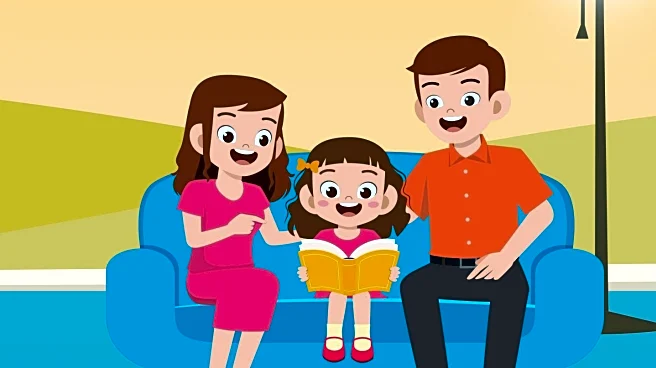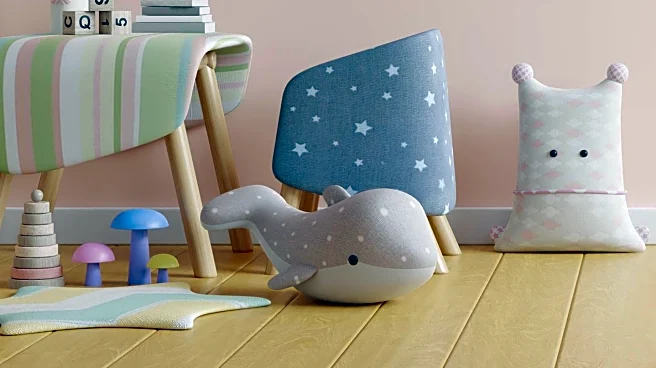What's Happening?
Child psychologists Dr. Sasha Hall and Dr. Stewart Pisecco discuss the essential elements that contribute to a happy home environment for children. They emphasize that happiness is not derived from material
possessions but from love, clear boundaries, and consistent routines. Key indicators include unconditional love, firm boundaries, emotional regulation, predictable routines, specific praise, and creating meaningful moments with children. These elements foster emotional safety, predictability, and a sense of belonging, which are crucial for children's development and well-being.
Why It's Important?
Understanding the components of a happy home environment is vital for parents and caregivers aiming to support children's emotional and psychological development. The insights provided by the psychologists highlight the importance of emotional safety and consistent routines, which can significantly impact children's ability to thrive. By modeling emotional regulation and reinforcing positive behaviors, parents can create a nurturing environment that promotes healthy communication and strengthens family bonds. This knowledge is crucial for fostering resilience and emotional intelligence in children, which are essential skills for navigating life's challenges.
Beyond the Headlines
The emphasis on emotional safety and connection in the home environment reflects broader societal values regarding child-rearing practices. As families face increasing pressures from work and social obligations, prioritizing emotional well-being and connection can serve as a counterbalance to external stressors. The psychologists' advice aligns with contemporary parenting trends that focus on mindfulness and intentionality in family interactions. This approach may lead to long-term benefits in children's social and emotional development, contributing to a more empathetic and connected society.












